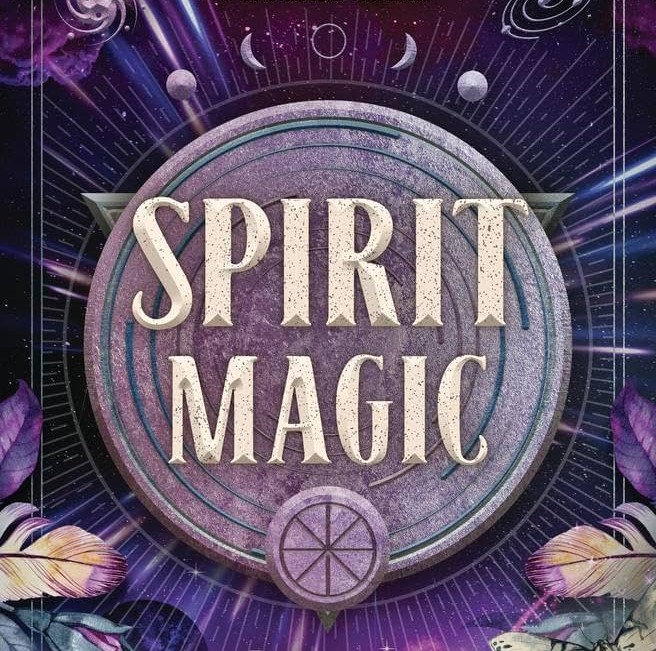The Element of Spirit and Its Association with the Cardinal Directions

Introduction
In traditional witchcraft, Wicca, paganism, and ceremonial magic, the natural elements of Earth, Air, Fire, and Water are foundational building blocks of ritual. Alongside these four lies the Element of Spirit, sometimes referred to as Aether, Akasha, Quintessence, or The Fifth Element. Spirit differs from the others in that it is not a tangible or physical element but rather the unifying force that connects, transcends, and animates them. Spirit is seen as the eternal essence that ties humanity to the divine and the cosmos together. Spirits placement in relation to the cardinal directions varies across traditions, but it is universally recognized as being beyond the material world.
Spirit in Traditional Witchcraft and Wicca In many traditions of witchcraft and Wicca, Spirit represents the center, the above and below, or the circle that encompasses all directions. While Earth, Air, Fire, and Water are invoked at the quarters Spirit is invoked last as the binding force that completes the whole.
Center and Circle: Spirit is often envisioned as residing at the center of a ritual circle, radiating outward to all other directions. In this sense, Spirit represents balance and unity, linking practitioner to the gods and natural forces.
Above and Below: Some Wiccan and witchcraft traditions associate Spirit with the vertical axis—the Above the divine, the celestial, the heavens and the Below the ancestors, underworld, roots of existence. This turns the ritual space into a three dimensional sacred sphere rather than a flat plane.
Directionless Yet Omnipresent: Unlike the other elements, Spirit is sometimes considered beyond direction. Instead, Spirit is invoked as the unseen force permeating the ritual circle, filling the space and empowering magical witchy workings. For many witches, Spirit is also the element of initiation, enlightenment, transformation, and divine connection, and plays a crucial role in both coven and solitary practices.
Spirit in Paganism
Within broader paganism and pagan ritual magick, Spirit often represents the life force, breath, or consciousness of the universe. Many pagan paths see Spirit as the divine spark that animates all living beings and binds them into a sacred web of interconnection.
Animistic Paganism: Spirit is the awareness present in all things like stones, trees, animals, and humans alike. The directions may shift depending on the cultural context, but Spirit is often perceived as both within and beyond them.
Five-Pointed Star (Pentagram): In pagan symbolism, Spirit is frequently shown at the top of the pentagram, presiding over the four material elements and representing transcendence, balance, and unity. This reflects the belief that Spirit governs and harmonizes all forces.
Seasonal and Cosmic Connection: Some pagan practices associate Spirit with the cycle of rebirth and renewal beyond the physical seasons, placing it as the eternal current that moves through the wheel of the year.
Spirit in Ceremonial Magic
In ceremonial magic, the Element of Spirit often called Aether or Akasha is regarded as the most subtle and elevated of the elements. It is associated with pure being divine will and the eternal source of manifestation.
Quintessence: Ceremonial magicians recognize Spirit as the “fifth element” that integrates the four material elements into a whole. The Quintessence is the goal of the alchemist, representing both perfection and union with the divine. • Directional Placement: Some ceremonial traditions align Spirit with the center of the circle, while others place it at above (zenith) and below (nadir), forming a complete sphere of six directions. Spirit governs the axis mundi, the world axis that connects the heavens, earth, and underworld.
Invocations: In ceremonial magic rituals might invoke Spirit through the higher divine names or through symbols like the hexagram which represents the union of opposites and ascending to spiritual reality. ⸻ Spirit and the Cardinal Directions Unlike Earth, Air, Fire, and Water, which are consistently tied to the North, East, South, and West, the Element of Spirit has no universally fixed direction. Instead, it is associated with the non-cardinal points: 1. Center: representing balance wholeness and unity. 2. Above (Zenith): representing transcendence divinity and cosmic connection. 3. Below (Nadir): representing roots ancestors and the underworld. Together these positions create a six-directional model: North East South West Above Below with Spirit interwoven through them all. Some traditions describe Spirit as the circle that encircles all directions, while others view it as the axis that connects the vertical and horizontal planes. Spirit thus functions as the dimension beyond space the force that holds the quarters together in sacred harmony.
In Conclusion
In witchcraft Wicca paganism and ceremonial magic the Element of Spirit transcends the boundaries of physical matter and cardinal direction. While Earth Air Fire and Water are grounded in the natural world Spirit represents the ineffable the eternal and the divine essence that gives life to all things. Whether envisioned as the center above and below or the circle encompassing the quarters Spirit is the thread that binds the magical elements together, uniting practitioner and cosmos in a sacred whole. In ritual and magical practice Spirit is the element of connection transformation and transcendence. It is both the source and the goal/the beginning the end and the eternal current that flows through the directions elements and mysteries of existence.
Here are some recommended witchcraft supplies from our wicca supply store for working with the element of Spirit in pagan ritual magick:
Our award winning range of ritual anointing oils for traditional witchcraft and wicca : Luna Ignis Spirit Oil
Our award winning Launa Ignis brand of fine hand blended ritual incense for spell casting : Luna Ignis Spirit's Essence Incense



